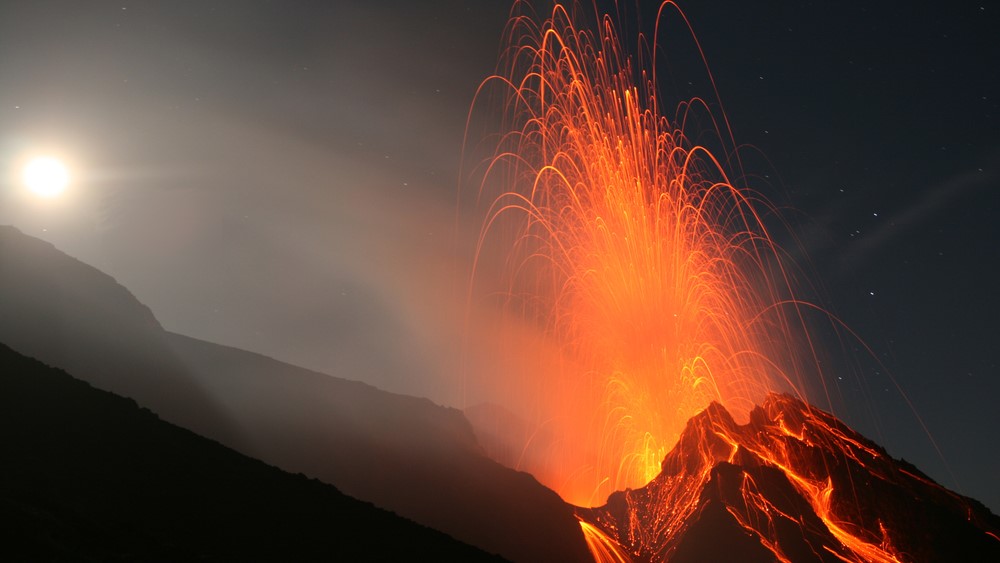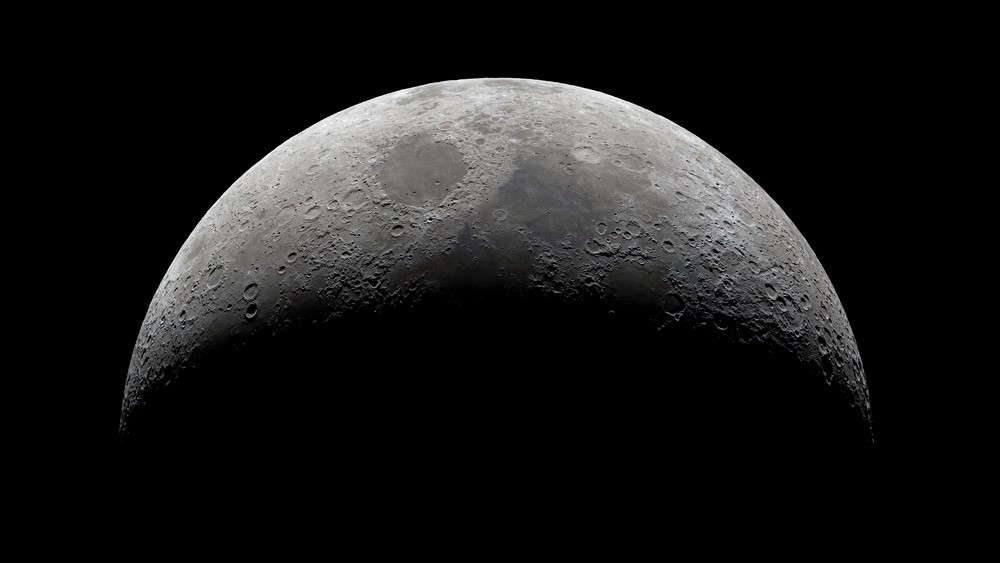Volcanic eruptions on the moon happened much more recently than we thought
A new study using lunar samples obtained by China's Chang'e 5 rover has revealed how the moon was able to remain volcanically active even after its mantle began to cool.
Volcanoes on the moon were still erupting at least 2 billion years ago, around 1 billion years more recently than scientists previously believed was possible. And the secret to these younger eruptions may lie in the type of magma oozing from these volcanoes, according to a new study.
Until recently, the only information scientists had about the moon's volcanic history came from the lunar samples retrieved during the Apollo missions around 50 years ago. These samples contained volcanic minerals dating to around 3 billion years ago, and researchers at the time believed that these minerals came from some of the last eruptions to occur on our satellite.
But in December 2020, China’s Chang'e 5 rover collected new samples from the near side of the moon, which were safely returned to Earth in an airtight capsule. After analyzing the newly collected moon rocks, researchers from the Chinese Academy of Sciences (CAS) discovered that the samples contained volcanic minerals dating back to around 2 billion years ago, meaning that volcanic activity had persisted longer on Earth's satellite than previously believed. However, experts were initially unsure how the moon's volcanoes had remained active for so long.
In a new study, published Oct. 21 in the journal Science Advances, researchers compared the volcanic minerals found by the Apollo and Chang'e 5 missions and found one key difference that hints at how the moon's volcanism persisted for so long — the newly collected samples had a slightly lower melting point.
Related: Colossal asteroid impact forever changed the balance of the moon
The uncertainty surrounding the moon's most recent volcanic eruptions stems from our understanding of the moon's mantle — the once-liquid magma layer beneath the lunar crust. Unlike Earth's mantle, which gives rise to volcanisms in part because it's extremely hot and molten, the moon's mantle has cooled dramatically in the last few billion years and is only partially molten or completely solidified, leaving the satellite volcanically dead. This would mean that the moon's mantle was already cooling off when the most recent lunar eruptions occurred. This makes the eruptions hard to explain because volcanic activity normally requires a hot and molten mantle, researchers wrote in a statement.
In the new study, the team reanalyzed the Apollo and Chang'e 5 mission lava samples. The Chang'e 5 samples contained higher levels of calcium oxide and titanium dioxide than the Apollo samples, which have a lower melting point than other minerals. This would have enabled the magma to remain molten at a lower temperature and, therefore, sustain volcanic activity as the mantle cooled.
Get the world’s most fascinating discoveries delivered straight to your inbox.
The younger magma could have had a melting point up to 144 degrees Fahrenheit (80 degrees Celsius) lower than the older Apollo samples, the study found. This suggests that during the 1 billion years between the two eruptions, the moon's mantle temperature probably decreased by a similar amount, according to the statement.
This is the first direct evidence of how the moon's mantle cooled during this time, and researchers hope it will shed light on how the moon and the rest of the solar system evolved.
This isn't the only noteworthy research from China's moon rovers.
In September, CAS researchers announced the discovery of a new mineral and a potential nuclear fusion fuel from the same Chang'e 5 sample used in the new study. In February, researchers operating the Yutu 2 rover revealed images of the lunar surface had strange glass spheres leftover from ancient meteor impacts. In December 2021, the Yutu 2 rover also spotted a "mysterious hut" on the far side of the moon. But this turned out to be an oddly shaped rock.

Harry is a U.K.-based senior staff writer at Live Science. He studied marine biology at the University of Exeter before training to become a journalist. He covers a wide range of topics including space exploration, planetary science, space weather, climate change, animal behavior and paleontology. His recent work on the solar maximum won "best space submission" at the 2024 Aerospace Media Awards and was shortlisted in the "top scoop" category at the NCTJ Awards for Excellence in 2023. He also writes Live Science's weekly Earth from space series.




